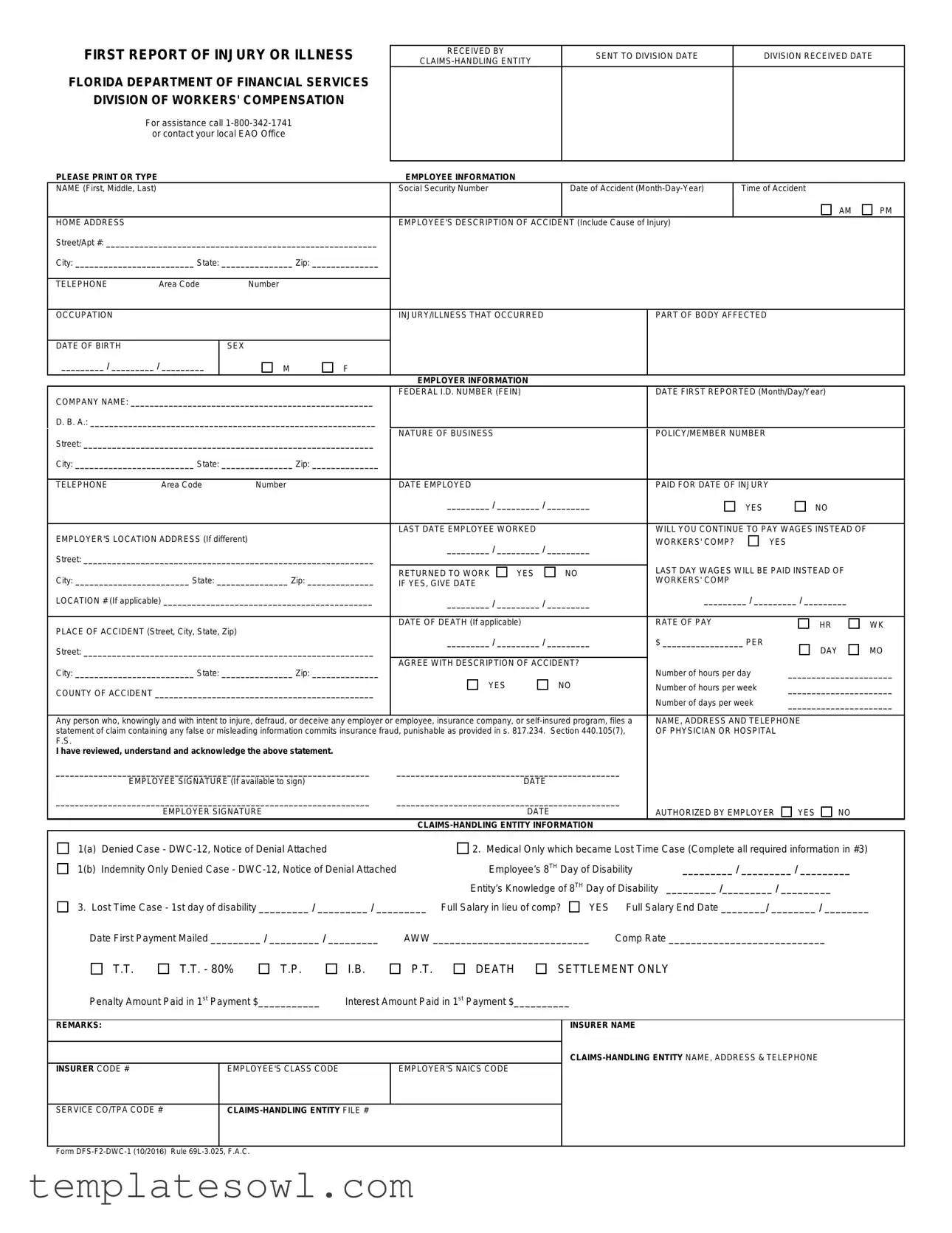What is the First Report Of Injury Florida form?
The First Report Of Injury Florida form is a document used to report work-related injuries or illnesses to the Florida Division of Workers' Compensation. It collects essential information about the employee, the incident, and the employer. This report is a critical step in initiating a claim for workers' compensation benefits in Florida.
Who needs to complete the First Report Of Injury Florida form?
The form must be completed by the employer or their claims-handling entity when an employee suffers a work-related injury or illness. Employees may also provide input on the description of the accident section. Accurate information is crucial for claims processing and to ensure compliance with state regulations.
What information is required on the form?
The form requires details about the employee, including name, social security number, date of birth, and home address. Information about the accident, such as the date, time, and place of the injury, is also necessary. The employer must provide their company name and employee's occupation. Additionally, data about the nature of the injury and the affected body part should be provided.
How is the information used once submitted?
The submitted information is used by the Florida Division of Workers' Compensation to track claims and manage employees' benefits. It serves as a unique identifier for each claimant. The information aids in processing benefits under Chapter 440 of Florida Statutes and can also be utilized in response to public records requests and subpoenas.
What should be done if the form contains inaccurate information?
If there is any inaccurate information on the form, it may lead to delays or denials of claims. It is advisable to contact the claims-handling entity immediately to rectify any errors. Prompt communication can help ensure that the claim remains valid and that the necessary benefits are received without interruption.
What are the consequences of providing false information on the form?
Providing false information on the First Report Of Injury Florida form is considered insurance fraud. Florida law imposes penalties for any individual who intentionally submits misleading information with the intent to deceive. Such actions can lead to criminal prosecution and may have further implications for the individual's ability to receive benefits.

